44 how to understand calories on food labels
How to Read Nutrition Facts Label - Food Network The point is food companies know that 200 calories will look way more appealing to a shopper than 800 calories. Once again, it's companies trying to lure you in. This carries over to all the other... Understanding Food Nutrition Labels | American Heart Association 1 - Start with the serving information at the top. This will tell you the size of a single serving and the total number of servings per container (package). 2 - Next, check total calories per serving and container. Pay attention to the calories per serving and how many calories you're really consuming if you eat the whole package.
How to Read Food Labels & Count Carbs | Allulose Allulose Labeling. Allulose is a form of sugar, so it will count toward total sugar and carbohydrate (CHO) grams on food and beverage labels, even though it is not metabolized in the body and does not contribute calories to the diet. Products made with allulose will have fewer calories compared to a full-calorie counterpart, but total ...
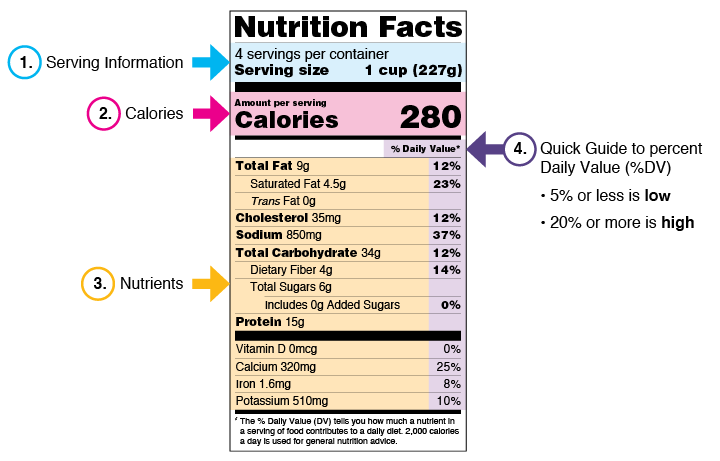
How to understand calories on food labels
How to Read the Nutrition Facts Label on Packaged Foods Sodium. Many people get far too much salt, or sodium. Most of it is in packaged foods and restaurant items. Limit salt to 2,300 milligrams (about 1 teaspoon) daily. If you have high blood pressure ... How to read food labels: MedlinePlus Medical Encyclopedia If you eat 2 cups (0.48 liters) at a meal, you are eating 2 servings. That is 2 times the amount of the calories, fats, and other nutrients listed on the label. Calorie information tells you the number of calories in 1 serving. Adjust the number of calories if you eat smaller or larger portions. Interpreting a Nutrition Label | Online Graduate Programs | Baylor You can find out how many of those calories come from fat by referring to the food label section, "Calories from fat." RAW AMOUNT How much of each nutrient is in 1 serving? This is shown in grams (g) or milligrams (mg). In this example, there are 100 mg of sodium in 1 serving. PERCENT DAILY VALUE
How to understand calories on food labels. How to understand food labels - Eat For Health The Nutrition Information Panel on a food label offers the simplest and easiest way to choose foods with less saturated fat, salt (sodium), added sugars and kilojoules, and more fibre. It can also be used to decide how large one serve of a food group choice or discretionary food would be and whether it's worth the kilojoules. How to Understand and Use the Nutrition Facts Label | FDA Feb 25, 2022 · Overview. The information in the main or top section (see #1-4) of the sample nutrition label (below) can vary with each food and beverage product; it contains product-specific information ... How To Read Food and Beverage Labels | National Institute on Aging Or you can call the U.S. Department of Agriculture's Food and Nutrition Information Center at 301-504-5414. Understanding percent Daily Value (% DV) The percent Daily Value (% DV) tells how much a nutrient in a serving of the food or beverage contributes to a total daily 2,000-calorie diet. How to read food labels - Heart Foundation NZ The star rating is calculated using an algorithm that takes into consideration a number of positive and negative nutrients for a particular food. The positive elements include protein, fibre, fruit, vegetable, nut, seed and legume content. The negative elements include energy, sodium, saturated fat, and sugar.
Understanding Food Nutrition Labels - Calorie Control Council Understanding Food Nutrition Labels April 17, 2015. ... some look for the item with the least amount of total fat and others look only at the calories. Many consumers don't understand that all the information included on the label works together and is equally important when making a decision about what you take home with you. 3 Ways to Calculate Food Calories - wikiHow Jan 12, 2022 · Compare the calories of different nutrients to their recommended daily values. According to dietitians and other food experts, 46-65% of the total calories you consume on a daily basis should come from carbohydrates, 10-35% from protein, and 20-25% from fats. 3 Ways to Read Nutrition Facts on Food Labels - wikiHow Empty calories refer to calories that are low in nutritional value, like pizza, soda, or sausage. 2 Read the fat content in a serving and check what types of fat are present. The next row on the label is fat, and it is accompanied by 2 different types of fat underneath the total number content. How to Read a Nutrition Label - WebMD Here's a label-reading shortcut. First, ignore the "sell" on the front. Go straight to the back and look at %DV. According to the FDA, you should look for nutrients you want, such as fiber, to ...
How to Read a Nutrition Label: The Path to More Empowered Eating Choices To figure this out, multiply the number of servings you consumed (or plan to consume) by the calories and grams of fat, sodium, sugar, and carbohydrates provided on the food label. Practice Using the product you have and what you typically consume, calculate how many calories, fats, sodium, sugars, and carbohydrates your serving yields. Understanding Food Labels | The Nutrition Source | Harvard T.H. Chan ... The label lists the calorie amount for one serving of food. The serving size, also important but often unnoticed, is easily doubled or tripled when not paying attention to the serving size, quickly inflating the calories. Highlighting both of these values emphasizes their importance and relationship. Food Labels | Nutrition.gov Food and Drug Administration (FDA) regulates the safety of food for humans and animals, including foods produced from genetically engineered (GE) plants, sometimes referred to as "genetically modified organisms" (GMOs). Find out more about the safety of GE plants, and how they are regulated here. PDF How Do I Understand the "Nutrition Facts" Label? your total calories. For a person who needs 2,000 calories a day, this is 120 calories or less, or about 13 grams of saturated fat. Most foods in the grocery store have a Nutrition Facts label and ingredient list. When you go grocery shopping, take time to read the Nutrition Facts labels on the foods you purchase. Compare the nutrients and
Food Labels 101: Understanding the Nutrition Facts Label Nutrition labels are based on a daily 2,000 calorie diet. Depending on your age, gender and activity level, you may need to consume more or less than 2,000 calories per day, so keep this in mind when viewing each label. Now let's take a look at the parts of the nutrition facts label and break it all down. Anatomy of a Nutrition Facts Label
How To Read Food Labels: Understanding the Basics - Instacart The nutrition facts table is usually found on the rear or the side of the label. This is perhaps the most useful part of a food label, providing a detailed breakdown of the product's nutritional content, including calories, protein, carbohydrates, fat, and more. 1. Beware of misleading claims
How to Read Nutrition Facts Labels the Right Way - GoodRx No. Calories from healthy foods that are packed with fiber — such as walnuts — are used by the body much differently than calories from "junk foods" such as packaged cookies or soda. ... Understanding how to read a Nutrition Facts label is important for eating healthfully. While there are many items on the label, with time and practice ...
Calories on the New Nutrition Facts Label | FDA One package of food may contain more than one serving, so, if you eat two servings you would be getting two times the calories shown on the label. For example, if you ate one serving of the food ...
This Is How to Read a Nutrition Facts Label on the Keto Diet You don't have to memorize these values, but simply keep in mind that calories are the sum total energy of the protein, carbs, and fats found in food, and they strongly influence whether you lose, maintain, or gain weight. Percent Daily Value (% Daily Value)
A Guide to Reading Food Labels - University of Rochester Feb 27, 2013 · of calories from fat. You should limit the number of calories from fat to 20-35% of your total daily calories. In the sample label, there are 250 calories in one serving and 110 calories from fat. This means almost 50% of the calories in a single serving of this food come from fat. Due to its high fat content, this food is not a healthy choice.
PDF How to Read the Food Label - Risk Services Look at the calories on the label and compare them with the nutrients. Then decide if the food is a good choice for you. Know your fats. Look for foods low in saturated fats, trans fats, and cholesterol to help reduce the risk of heart disease (5% DV or less). There's no DV for trans fat because it's best to limit or avoid it.
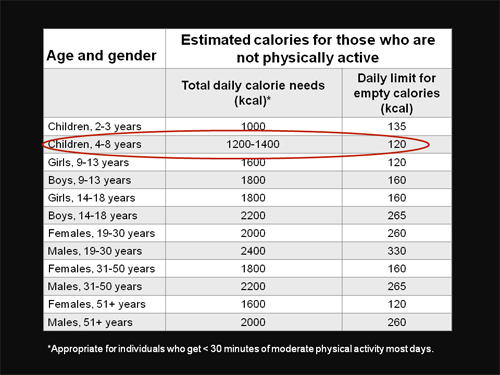
Illustrated Guide to Good Nutrition: Food Choices That Promote Health and Weight Management in ...
Learning About Calories (for Kids) - Nemours KidsHealth Most foods and drinks contain calories. Some foods, such as lettuce, contain few calories (1 cup of shredded lettuce has less than 10 calories). Other foods, like peanuts, contain a lot of calories (½ cup of peanuts has over 400 calories). Some people watch their calories if they are trying to lose weight.
How to Read Nutrition Labels | Cooking Light Reading nutrition labels can be tougher than you'd think, but we are here to help. Learn how to decipher nutrition facts panels to stock up on healthy Reading nutrition facts panels are a great way to help you make informed healthy eating decisions, but they can be tough to decipher. ...
How to Read Carbohydrates on Food Labels - GlycoLeap When learning how to read carbohydrates on food labels, always remember that 1 serving of carbohydrate is equal to 15 g of carbohydrates. If you want to have a snack, it is recommended to eat no more than 1 to 2 servings of carbohydrates in one sitting. That would be around 15 to 30 g of carbohydrates. Snack = 15 - 30 g of carbohydrate
How to understand food nutrition labels - Medium Calories per serving This number tells you how much energy is contained in one serving of this food. Calories are units of energy. Our bodies burn calories during activity and we gain calories from...
Calories for Hundreds of Foods: Your Calorie Chart Database Welcome to Calories.info, a food database that will help you discover the caloric content and other facts about common foods. When you use the calorie database to understand how your body gets energy out of your favorite meals and snacks, paying particular attention to the number of calories in food you’ve eaten, you’ll be empowered to make dietary choices that never leave you with guilt ...
How to Read a Dog Food Label - American Kennel Club Quick Tip: Look at the basic four: protein, fat, fiber, and water. Many states have regulations requiring the minimum amount of nutrients a pet food must contain, as well as the maximum amount of ...
How Do They Calculate Calories on Food Labels? The researchers ignite the food with an electric current, the water absorbs the heat released as the food burns, and a thermometer measures the changes in temperature in the water. Finally, the calories are determined by calculating the change in water temperature multiplied by the volume of water. Calories on food labels
Understanding food labels - Canada.ca Find information on food labels and how to understand them. Learn about nutrition facts tables, serving size, list of ingredients, % daily value and nutrition claims.
Interpreting a Nutrition Label | Online Graduate Programs | Baylor You can find out how many of those calories come from fat by referring to the food label section, "Calories from fat." RAW AMOUNT How much of each nutrient is in 1 serving? This is shown in grams (g) or milligrams (mg). In this example, there are 100 mg of sodium in 1 serving. PERCENT DAILY VALUE
How to read food labels: MedlinePlus Medical Encyclopedia If you eat 2 cups (0.48 liters) at a meal, you are eating 2 servings. That is 2 times the amount of the calories, fats, and other nutrients listed on the label. Calorie information tells you the number of calories in 1 serving. Adjust the number of calories if you eat smaller or larger portions.
How to Read the Nutrition Facts Label on Packaged Foods Sodium. Many people get far too much salt, or sodium. Most of it is in packaged foods and restaurant items. Limit salt to 2,300 milligrams (about 1 teaspoon) daily. If you have high blood pressure ...

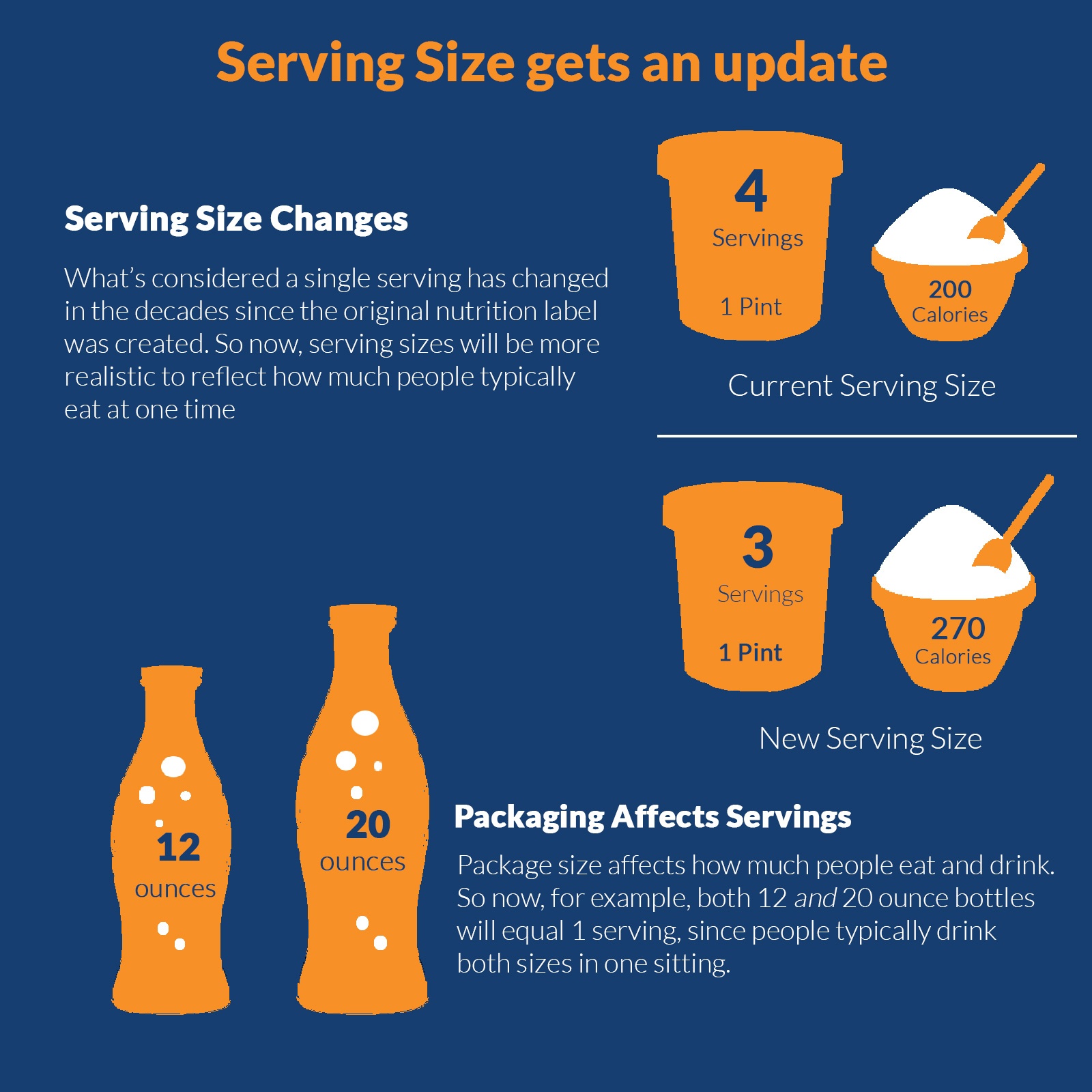




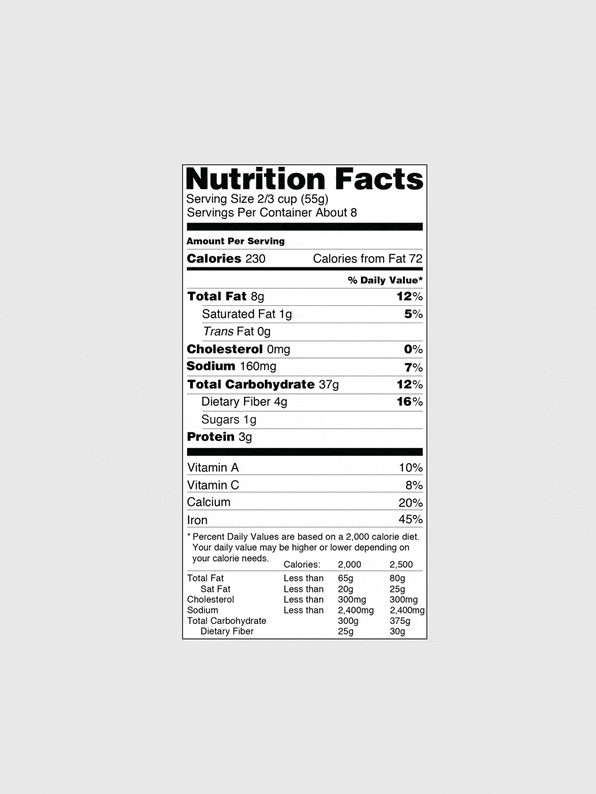



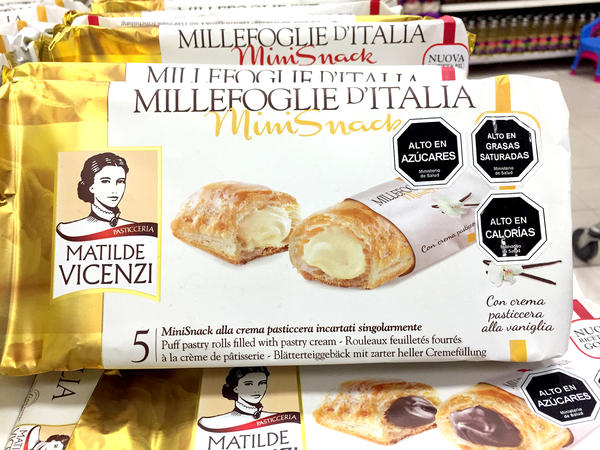

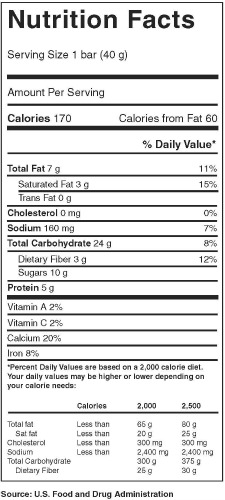

Post a Comment for "44 how to understand calories on food labels"